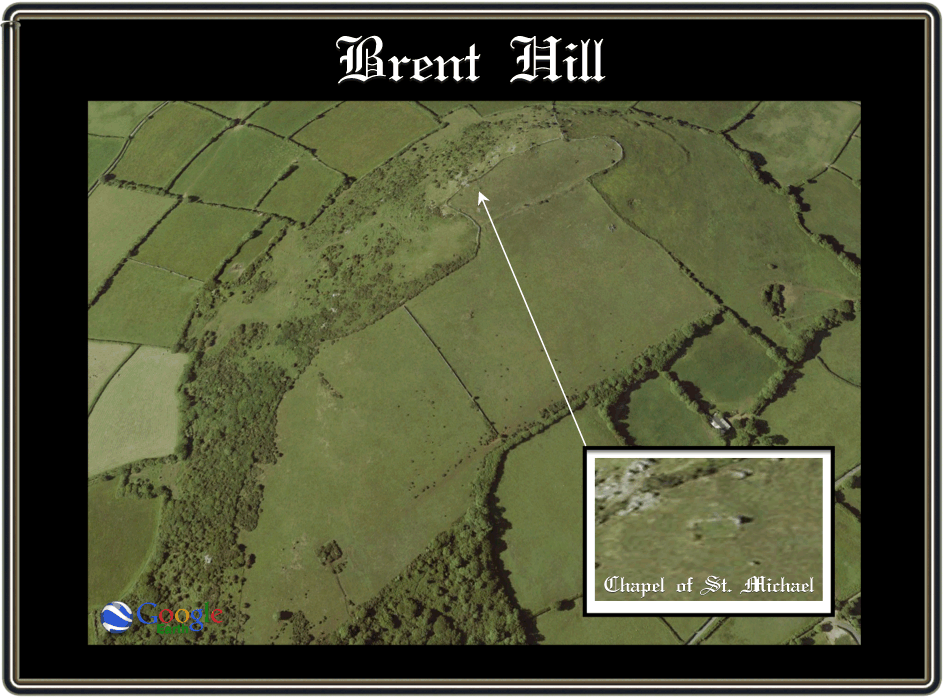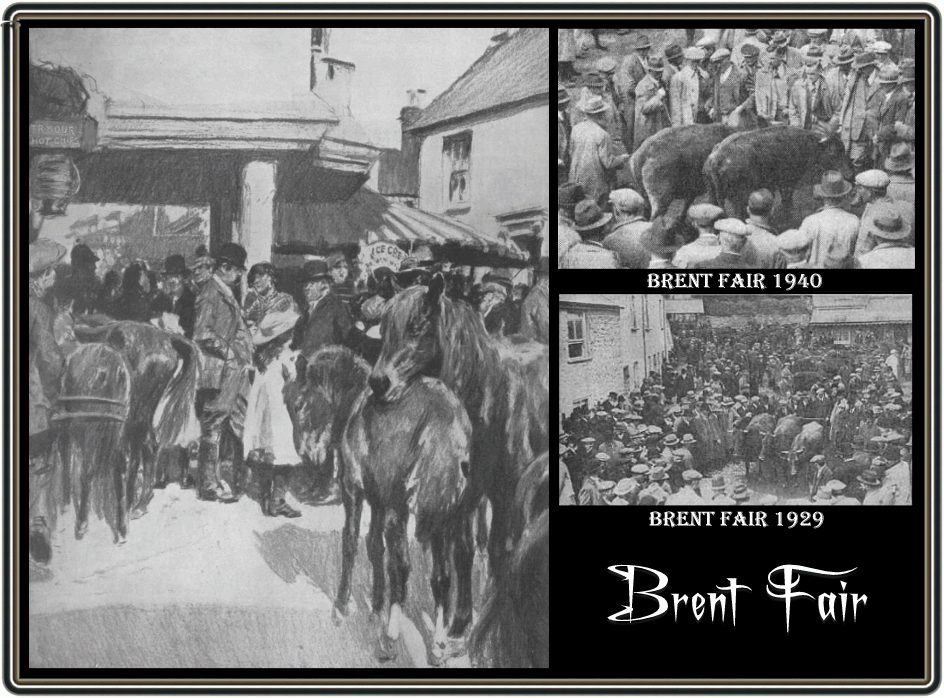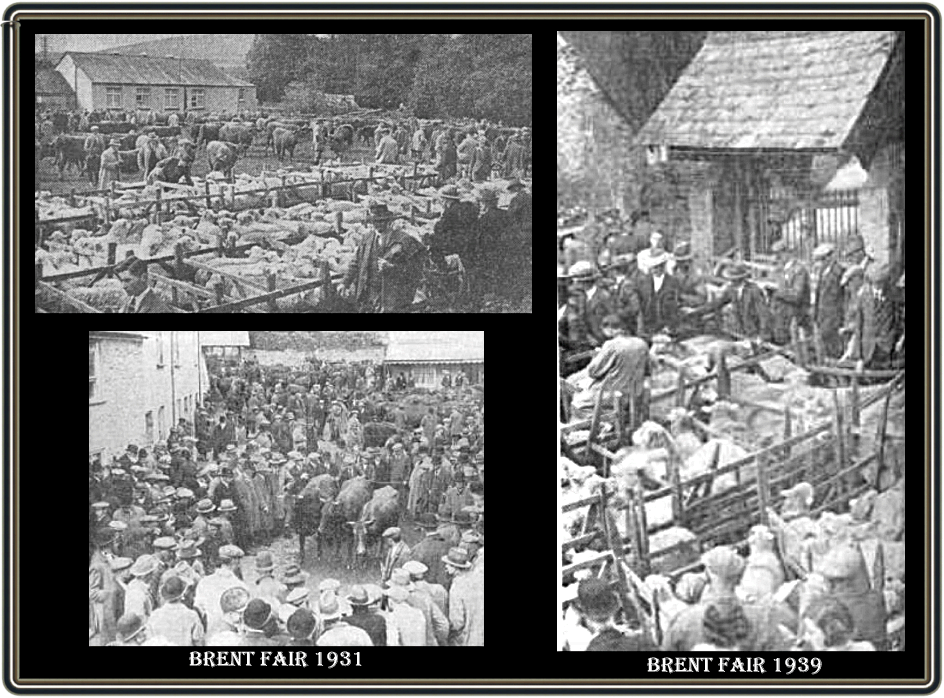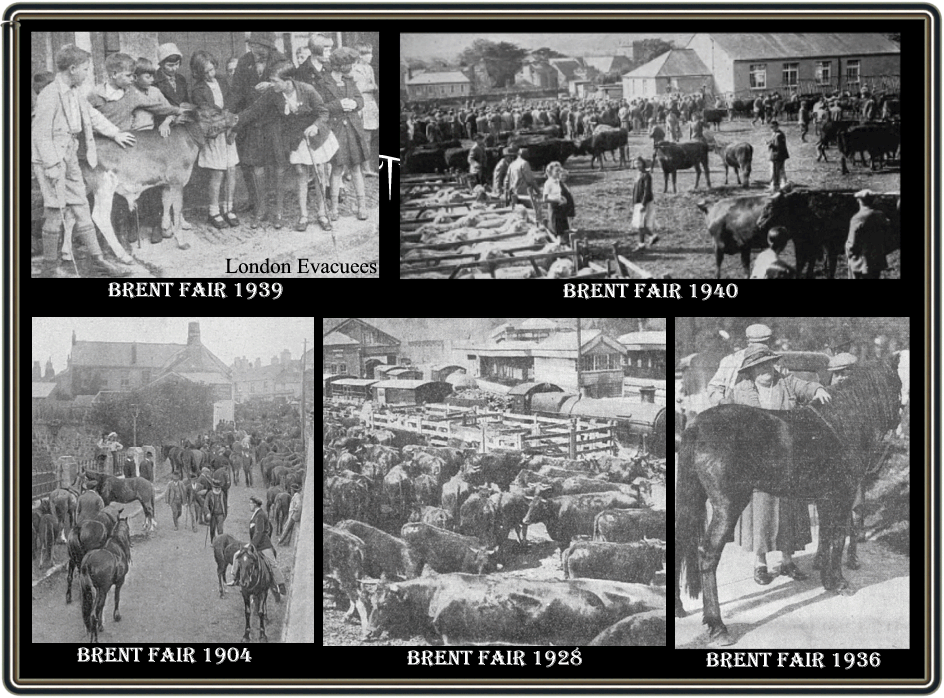
Over the centuries fairs have always been an important facet of Dartmoor life, most have been consigned to its memory box but a few still exist today in one form or another. Probably the two most celebrated ones are Widecombe Fair and Tavistock’s Goosey Fair. However, there was another fair which in its day was equally as popular both for selling livestock and as a visitor attraction and that was ‘Brent Fair’. and is reputed to be the second oldest fair in England. To find the origins of this fair we must rewind to the year 1350 and delve into the text of a Royal Charter issued by King Edward III. In this he granted to the Abbot of Buckfast Abbey the privilege of a three-day fair. This was to be an annual event celebrated on the feast day of St. Michael (which is the 29th of September and also known as Michaelmas Day) and the two days previous to the feast. It was stipulated that the location of this fair was to be; “in quandam placea Brentedoune vocata,” in other words it was to be held at what is known as Brent Hill today. In 1906 Dom. A, Hamilton wrote the following; “Brent Fair, held for three days at Michaelmas, began in olden times immediately after the people had satisfied their devotion by a visit to St. Michael’s on Brent Hill.” p. 33. Here he is referring to a chapel which once stood on Brent Hill that was dedicated to St. Michael. Today little of the structure remains but a few low foundation walls as can be seen on the aerial photo below. This explains the connection between the location of the original fair and the dates it was held on – St. Michael’s Chapel and St. Michael’s Day. In his ‘Survey of Devon written in 1714,’ Tristram Risdon noted that the fair had been extended to two occasions, one on May Day and the other on St. Michael’s Day, (a practice that was carried on until the 1940s). The fairs would begin at mid-day on the Monday prior to the last Tuesday in the months of April and September and continue on until the Wednesday night. William Crossing mentions that in his day the fairs were still held ‘under the glove.’ p.10. This was an old tradition whereby a glove was raised at the beginning of the fair and was a signal trading could take place, at the end of the fair the glove would be taken down and all trading stopped. Eventually the fairs moved away from Brent Hill down into the town of South Brent. In later times the fair was moved from Brent Hill down into the town itself where it remained until 1940 when it was moved to a nearby field. This move was welcomed by many of the South Brent residents as it was not unheard of for those who lived besides the narrow street to have their windows smashed by the long, sharp horns of the cattle as they stampeded through the town. Today it’s hard to imagine the atmosphere on such a busy day with cattle, sheep and ponies mixing with buyers and sellers along with the hoards of visitors. Probably the nearest thing to it would either been Widecombe Fair or The Goosey Fair. Below are a couple of articles which paint a picture of what Brent Fair Day would have been like back in 1871 and 1926:
“Brent Autumn Fair has always been notorious for two things – the quantity of geese that are consumed, and the pony fair. Arriving at Brent between the hours of one and two, the smell of sage and onions that pervades the whole place leaves no doubt as to what is going on, and excepting the droves of ponies driven in from Dartmoor, the streets are nearly empty. By-and-by, after satisfying the inner man farmers, drovers, and dealers again appear on the tapis for the horse fair; and now the fun begins. There is a drove of ponies numbering over one hundred, most of them as wild as deer – all sorts and sizes – prices ranging from 50s. to £10. The moor men have a sharp time of it to keep the herd together. The pony that strikes your fancy is perhaps packed in three or four deep. Only express a wish to have a closer look at him, and by some means or other the drover contrives to get amongst the herd, seizes your fancy round the neck, and after a sharp tussle he is brought to the outside of the rank for inspection. Many ponies are bought to go in light carts, such as those used by bakers or hawkers, and, as soon as purchased, are haltered: then comes the battle royal. Never having been subjected to such an indignity before, the little fellow fights manfully; but by aid of dragging and pushing, he is at length taken home or into the blacksmith’s yard, where, after another severe fight, and receiving a very different sort of treatment to that recommended by Rarey, he is at last shod. Dartmoor ponies are not to be picked up so cheap now as formerly. Dealers are beginning to find out from whence to supply the demand for a nice lady’s pony,, or one that can be made fit to carry the young hopeful in the park with papa. This being the case, moor men are getting more knowing, and ask higher prices. Being so close to the wilds of Dartmoor, it is amusing at Brent Fair to contrast the different people attending. Every one is found, from the parson of the parish to the gravedigger, all come to see the fun at the pony fair.” The Western Morning News, October 4th, 1871.
“Come them maidens and men, to the fair in the pride of the morning. The last Tuesday in September has for years been set apart in the ancient little town of South Brent as the annual fair day, and yesterday, from dawn until long after dusk had crept in over the moorland hill, almost under the shelter of which the town nestles, the place was alive with the lowing of cattle, the whinnying of the horses and moorland ponies, the bleating of sheep, the shouts of the herdsmen, the clamour of the cheap-jacks, and the broad Devon voices of the bargainers all intermingling in a hive of activity.
Brent Fair is one of those institutions handed down from a far away past – it is stated that its origin extends as far back as the middle of the 16th century, (not quite right, see above), – but then it was a fair in the old sense of the word; today it is a glorified market, shorn of almost all its old associations. It requires a big stretch of the imagination to bring to mind the scene as it would have been even half a century ago.
But even amid its departed glory, Brent Fair to-day is an event of real interest and importance to the surrounding countryside, and so anyone would have agreed if they could have seen the scene as it was unfolded in the none too commodious thoroughfares of the town yesterday. A visitor chancing to pass through the place would have been alarmed and curious, for from end-to-end of the town, in the main thoroughfare and in the side streets there seemed to be a hopeless conglomeration of beasts, men, and women, a seeming confusion which would require no small amount of disengaging. Yet most of those present appeared to be wandering amid the sheep, the horses, and cattle with no great concern. If a horse or cow came near a ruddy faced farmer or the agricultural worker with the land stamped indelibly upon his face, he gave it a hit across the face with a stick, or a sound smack over the rump, and it turned its dangerous end in someone else’s direction. But to the man from the land of trams and motors, however used he might be to dodging vehicles, the situation gave a sense of bewilderment. He no sooner seemed to get off the ‘horns’ of one dilemma, than he found himself in peril of going under in a stampede of prancing, spirited Dartmoor ponies, scampering in every direction but the right, or else being threatened by the hoofs of a ponderous agricultural horse.
But fair day at Brent is a wonderful sight. All the animals for sale are in the streets; even the auctioneering takes place in the most convenient part of the roadway. The auctioneer is lost to view in the crowd around him. You might catch a glimpse of him only occasionally, but you can be sure he is there, for you can hear his voice. The horse or bullock is turned round and round in a miniature circle, until it threatens to become permanently bent. There is abundant banter and chaff, but the business side remains dominating all the time, for a fair as we see it to-day is essentially a place of business, a place for driving bargains.
The stolid old cart horse stands almost unmoved amid the scene, but those rough-looking, wiry ponies, wild and spirited, with the air of the moorlands still in their nostrils, plunge wildly left and right, distressed by their first contact with town life, the bustle and excitement, and the sudden curtailment of their liberty. There is something strangely pathetic about these little ponies, shaggy and unshod, with their manes flowing in the wind, and their ungroomed tails almost sweeping the ground. Hundreds of them are brought in to Brent fair to be sold. There is a round-up a few days before the sale, and they are brought together into what are termed ‘drifts‘. The owners sort them by their markings, that is, the markings of the older ones, and they can generally tell the younger ones are their property, as the small ponies will always keep close to the mother.
When they are brought to the fair their liberty is over. No longer are they to be allowed to gallop care-free over the wind-swept moors. They must now do man’s bidding, and most of them find their way from the sale ring to the cattle truck at the railway siding and thence on to the mining districts where they become pit ponies. One almost felt the exultant joy when some of the animals failed to find a bidder, and realised that they would be soon back amid the tors.
In years gone by Brent Fair was a three days’ affair – one day of business and two of festivity. In those days it was known as Brent Goose Fair, and tradition has it that there was always one goose for every four people who sat down to dinner, and they sat and ate not well or wisely, but until the last of the goose flesh had disappeared.
In the cattle and sheep sales there was a fairly brisk trade, but probably Brent has never experienced such a bad sale for horses. Suckling moorland ponies could be bought for anything from 35s. to 50s., but the larger fill-grown ponies commanded a bigger figure.” – The Western Morning News & Mercury, September 7th, 1922.
As can be gathered from the above comments goose consumption was a major aspect of the fair which at some point became known as the Brent Goose Fair although by the late 1920s this association had almost ceased.
Livestock sales are always fickle affairs when prices fluctuate widely from week to week and Brent Fair prices could also be affected by a whole range of factors. Over the years these have included; the weather, foot and mouth outbreaks, swine fever, stoppages on the railways that transported the livestock which were sold and two World Wars. The state of the annual harvest could also have an impact on prices and the number of farmer attendances, if it was late many farmers and prospective buyers were more concerned with gathering their crops than attending the fair.
Finally there is one sad story connected to Brent Fair which tells of a poor farmer from Holne who visited the fair and purchased what he thought was a bargain pony. By the time he reached a spot known today as Hangman’s Pit he realised he had been sold a worthless beast. So ashamed was he that couldn’t face returning home and showing his wife what he had wasted their hard earned money on. So he took the drastic step of hanging himself from one of the trees in a tinner’s gully.

Crossing, W. 1987. The Ancient Stone Crosses of Dartmoor. Exeter: Devon Books.
Do. Hamilton, A. 1906. The History of St. Mary’s Abbey of Buckfast. Buckfast Abbey.
 Legendary Dartmoor The many aspects past and present of Dartmoor
Legendary Dartmoor The many aspects past and present of Dartmoor




